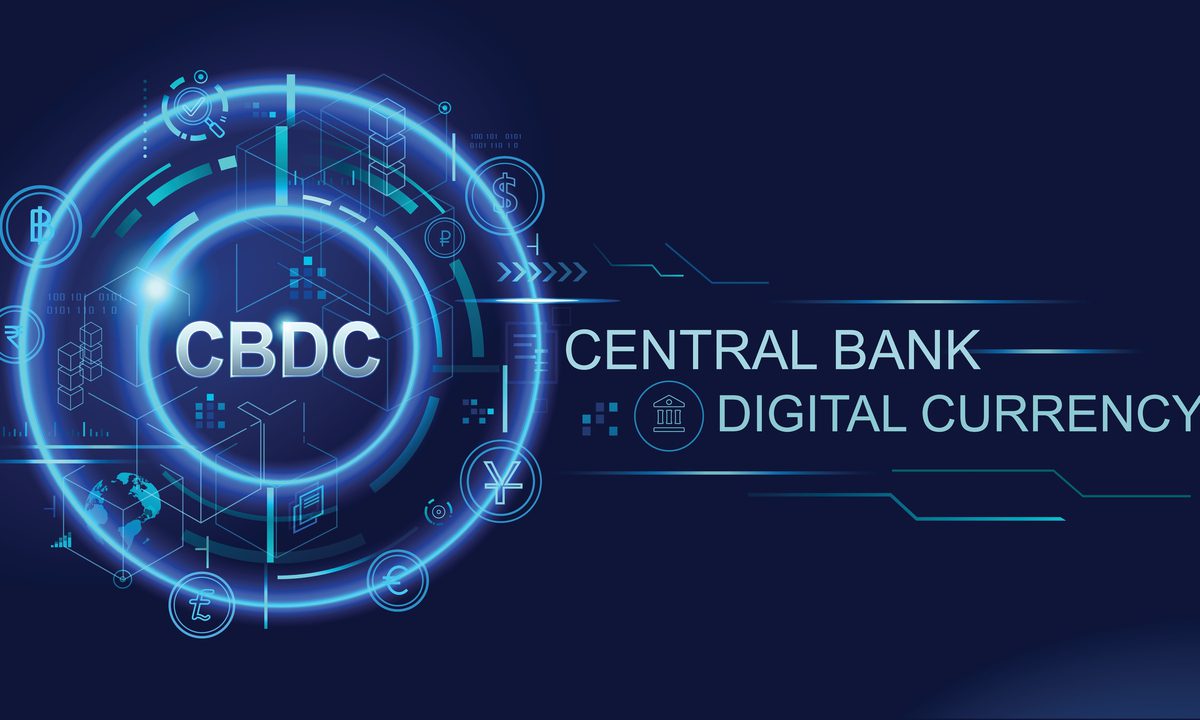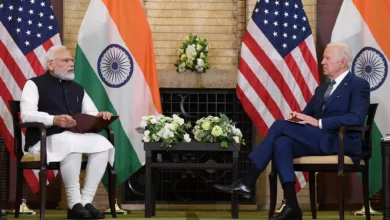
RBI is planning to develop a blockchain-based digital currency
The Reserve Bank of India (RBI) will launch its digital currency in the new financial year, according to Finance Minister Nirmala Sitharaman.
During her budget statement in Parliament, the Finance Minister stated that digital currency would lead to a more efficient and cost-effective currency management system.
“As a result, it is planned that the Reserve Bank of India produces digital rupees utilising blockchain and other technology beginning in 2022-2023,” she added. The importance of digital currency, blockchain, and crypto-assets was wholly overlooked in the previous day’s economic assessment.
According to BDO India’s Partner & Leader, Indirect Taxes, “digital currency appears to have finally caught the government’s attention.”
“The introduction of a digital rupee based on blockchain technology will reduce the financial and physical effort required for money management,” she adds.
Sanjeev Sanyal, the government’s principal economic adviser, stated that the administration would take a balanced approach to the problem of cryptocurrency legislation because they have ramifications for the country’s financial stability.
At the World Economic Forum, Prime Minister Narendra Modi has requested a worldwide discussion on such policies.
A “phased implementation strategy” for a Central Bank Digital Currency (CBDC) is being developed by the Reserve Bank of India. According to CapitalVia Global Research, a pilot to test general-purpose digital money could be conducted shortly.
“The central bank is considering some aspects connected to the projected CBDC’s scope and regulatory framework, which will most likely coexist with cash and digital payment methods,” it continued.

What is the difference between Digital Rupee and Bitcoin, and other cryptocurrencies?
The RBI’s subsequent attempt to enhance India’s digital economy will be the Digital Rupee or Central Bank Digital Currency (CBDC). The notion of the Digital Rupee, which Finance Minister Nirmala Sitharaman introduced in the Union Budget 2022-23, is designed to take inspiration from cryptocurrencies like Bitcoin while adhering to central bank regulations.
The Finance Minister stated that the Digital Rupee, or CBDC, will work “using blockchain and other technologies during the budget address.” So that’s one thing that all cryptocurrencies have in common with India’s impending digital currency. The other is the problem it intends to address: India’s digital currency will “lead to a more efficient and less expensive currency management system,” according to the minister.
With such advantages expected to boost India’s digital economy, the RBI budget projections for 2022-23 include the launch of the Digital Rupee. Even though their purposes may be similar, this last piece of information appears to be the only significant distinction between the CBDC and Bitcoin or another cryptocurrency.
Let’s take a closer look at this.
What is Digital Rupee or CBDC?
Central Bank Digital Currency (CBDC) is defined by the Reserve Bank of India (RBI) as a digital form of legal cash issued by a central bank. In simple terms, it is a digital representation of the Indian Rupee, which is fiat money. As a result, it can be exchanged one for one with fiat cash.
What is the significance of the Digital Rupee?
CBDC will have all of the advantages that cryptocurrencies and other digital forms of payment have. To begin with, a digital currency cannot be ripped, burned, or physically harmed. They also can’t be physically lost. Compared to notes, the life of a digital form of cash will be indefinite.
The simultaneous migration to digital payment methods will have its own set of advantages. The government will save money on currency printing because transactions will be done digitally. The transactions will be quick and available from even the most remote locations.
The Digital Rupee will bring with it yet another significant edge over cryptocurrencies. It will be governed by a central authority, reducing the danger of volatility that other digital currencies, such as Bitcoin, have. This takes us to the sole significant distinction between the two.

Digital Rupee different from Bitcoin
It was previously unknown how India’s virtual currency would evolve. The new budget has shed some light on the subject, confirming the country’s use of blockchain and other technology. While there was formerly a distinction between Digital Rupee and Bitcoin, little is currently distinguishing the two.
By definition, blockchain technology is decentralised, which means that all of its data is kept across a network of computers. This increases the data’s resiliency against both human and cyber-attacks. This network is deployed globally across the systems of its developers for cryptocurrencies like Bitcoin.
A somewhat different version of this will be available in Digital Rupee. The currency will not be genuinely decentralised because the RBI will govern it. One entity controls its issuance and distribution, which is the polar opposite of what decentralised means in a genuine sense.
In the case of the Digital Rupee, the adjective “decentralised” only applies to blockchain technology and its network of computers. In the future, the RBI will be required to put up this network, but it will be confined to the bank and its affiliated organisations. CBDC may require “an underlying mechanism for issuance and distribution to the public,” according to a PWC report, and the RBI may be required to include public and private banks, payment service providers (PSPs), and network operators.
Other financial institutions and third-party service providers would then be involved in a larger ecosystem. So, even though the Digital Rupee will use the same issuance models as the physical currency, it will require a setup.

CBDC’s other well-known facts
Following Sithraman’s budget presentation, the RBI will likely issue an official notification outlining how the Digital Rupee would transact. Previously, technology experts and evangelists presented numerous concepts for how the Digital Rupee could be transacted. One significant difference will be that a Digital Rupee transaction will be immediate, unlike current digital payment methods.
According to many reports, the purpose of the Digital Rupee is to give customers the ease and security of digital and the existing banking system’s regulated, reserve-backed circulation.
CBDC is in high demand across the globe, but only a few countries have made significant headway with it thus far. “A BIS study of central banks in 2021 found that 86 per cent were actively researching the potential for CBDCs, 60 per cent were experimenting with the technology, and 14 per cent were conducting trial projects,” according to the RBI website.
What is the source of this sudden interest?
CBDC’s adoption has been defended for several reasons:
1. Faced with diminishing paper currency usage, central banks strive to popularise a more acceptable electronic form of cash (as in Sweden);
2. Countries with high physical cash usage want to make issuance more efficient (like Denmark, Germany, Japan, or even the United States); 3. Central banks that want to meet the public’s demand for digital currencies, as evidenced by the growing use of private virtual currencies, while avoiding the more harmful consequences of such private money.”
The Pros and Cons of the Digital Rupee
Pros: it is convenient, secure, and efficient, it promotes financial inclusiveness, and it eliminates counterparty risk.
Cons: it includes centralised implementation, privacy concerns (possibilities of compromise), legal and regulatory issues (yet to be resolved), and an uncertain impact on countries without full capital account convertibility (due to trade deficit or local economic challenges).

Officials say the RBI’s Digital Rupee will aid in the fight against black money
According to a senior finance ministry official, the proposed digital rupee, issued by the Reserve Bank of India (RBI) starting next financial year, will enhance the digital economy and help prevent the threat of black money.
“If you buy goods from a shopkeeper and pay with digital money, and the shopkeeper then uses that digital money to pay his supplier, the RBI would have all the data of the transaction done with the digital rupee,” the official explained.
According to the official, black money gains are usually collected in cash from underground economic activity and hence are not taxed. Still, it will be difficult for a person to escape taxes if the RBI has the transaction trail of every digital rupee.
The introduction of the digital rupee is announced. According to Finance Minister in her Budget speech, the launch of Central Bank Digital Currency (CBDC) will give a huge boost to the digital sector. In addition, the digital currency will result in a more efficient and cost-effective currency management system.
To combat black money, the Finance Minister unveiled a new provision in the Union Budget 2022-23 called “Deterrence against tax evasion.” “Right now, there is ambiguity surrounding set off, of brought forward loss versus undeclared income uncovered in search activities,” Sitharaman explained.
When unreported income or sales suppression, for example, is discovered, it has been noted that payment of tax is avoided by setting off losses. Now no set-off, of whatever loss, be allowed against undeclared income identified during search and survey activities to offer certainty and increase deterrence among tax evaders.
“This has been incorporated in the financial bill as a new clause termed 79A,” JB Mohapatra, Chairman of the Central Board of Direct Taxes (CBDT), told ANI. This is primarily to prevent people from reporting unreported income. This denial of set-off for brought-forward losses will have a beneficial effect in punishing individuals who deserve to be taxed in respect of previously concealed income.”
“This is a realisation that the provisions of the search assessment are being used in a manner that was never the objective of legislators,” CBDT Chairman remarked when asked about the need for this additional provision. The purpose of the law was to tax secret income; it was never intended to be used to offset undisclosed income.

Digital Rupee can help bank depositors and businesses.
CBDCs are known for their ‘cheap and quick settlement’ of financial transactions all around the world. Many have argued, however, that India’s retail payment systems – namely, the Immediate Payment Service (IMPS), the Unified Payments Interface (UPI), and the apps built on top of them (BHIM, GooglePay, WhatsApp payments, and so on) – have made digital payment transactions in India cheap, accessible, and efficient for the average Indian consumer.
According to a small-scale RBI poll performed in 2021, approximately 60% of survey respondents chose digital payment instruments for transactions exceeding Rs. 500. This shows that India’s present digital payment instruments are satisfying the needs of Indian consumers in terms of payments.
Indeed, the potential of a CBDC in each jurisdiction may differ based on the effectiveness of its payment systems. If a country’s domestic payment system is efficient, it isn’t easy to see how CBDCs may benefit the common customer right away.
In India, the average bank depositor is the first user of a CBDC. Money is issued in (at least) two kinds around the world today. The first type of money is a central bank’s liabilities. In India, for example, RBI releases currency notes that are the RBI’s liability.
Similarly, the reserves held by commercial banks with the central bank represent the central bank’s liabilities. The second type of money is deposits held by depositors (individuals or businesses) at commercial banks. The central bank’s liabilities do not back these deposits. In other words, if a commercial bank goes bankrupt or has liquidity issues, the depositor cannot directly sue the RBI for the value of the deposit. And it is here that a CBDC provides the most value to the average Indian household or business.
Because the CBDC is a central bank liability, it reduces depositors’ exposure to their bank. It is currently unimaginable for a central bank to default on its commitment to honour a payment or settle a transaction. As a result, a CBDC is a risk-free settlement asset.
In India, depositors are exposed to bank difficulty and possibly bank failure. Due to bank distress, depositors of roughly 21 banks have been unable to withdraw funds from their accounts in recent years (excluding the demonetisation exercise, which triggered caps on withdrawals).
Depositors’ deposits with commercial banks must be insured up to Rs. 5 lakh by the Deposit Insurance and Credit Guarantee Corporation (DICGC). The DICGC’s track record, on the other hand, reveals that payments can be sluggish and dispersed over time. A CBDC, which is a responsibility of the RBI, will protect Indian depositors against damages when dealing with commercial banks in India.
For institutions, the risk-free feature of a CBDC decreases the risk of settlement default. Banks and financial organisations currently settle their commitments using reserves held by the RBI. Allowing inter-bank settlement through a CBDC will reduce the counterparty banks’, financial institutions, and RBI’s solvency and liquidity concerns when settling such inter-bank transactions.

Cross-border settlement costs
Cross-border payments are the second application for a CBDC issued by the RBI. Cross-border payments are costly globally since they involve many banks across jurisdictions and, in some instances, even within the same jurisdiction. Because foreign banks in most jurisdictions work through ‘correspondent banks,’ which have a settlement account with the central bank, the time and costs of settling cross-border remittances are significantly higher than those of domestic payment operations.
The amount of time it takes for cross-border remittances to settle varies depending on whether the sender and payee are:
- Retail consumers.
- Small or large businesses.
- Regular importers or exporters.
- The type of bank engaged in the remittance chain.
- Other factors.
CBDCs offer the potential to reduce the cost of cross-border payments by eliminating the need for correspondent banks. A CBDC issued by the central bank can be paid immediately in the central bank’s digital ledger, bypassing the complete chain of banks generally engaged in a cross-border transaction.
Consider paying for a book in USD currency notes over the counter at an airport bookstore to give the reader a concrete example of how this might operate. A transaction of this nature settles instantly. A CBDC-based cross-border payment will function similarly. This, however, is tied to a CBDC’s cross-border interoperability. To put it another way, simply issuing a CBDC in India will not suffice to realise this use case.
The RBI and the Ministry of Finance will have to collaborate with central banks and sovereign governments in other jurisdictions to ensure that their payment systems are equipped to accept CBDCs issued by the RBI or that a payment instruction in CBDCs will result in an equivalent currency transfer in the relevant jurisdiction.
Finally, other central banks worldwide are exploring implementing CBDCs, with the People’s Bank of China and the Riksbank of Sweden having conducted small-scale trials. The Federal Reserve and the Bank of England, for example, have released discussion papers outlining the potential benefits and costs of issuing CBDCs. These studies have raised concerns about monetary policy, financial stability, and privacy about CBDCs, and have asked for public opinion on these issues. The RBI is expected to follow suit before producing its own Digital Rupee.
Given that retail payment systems in India function pretty well at scale, the case for a CBDC must be supported by obvious use-cases for the average family and enterprise, both small and large. It’s critical that, as with any other financial product, the CBDC’s design is driven by the use-case, not the other way around.
Edited and published by Ashlyn Joy






